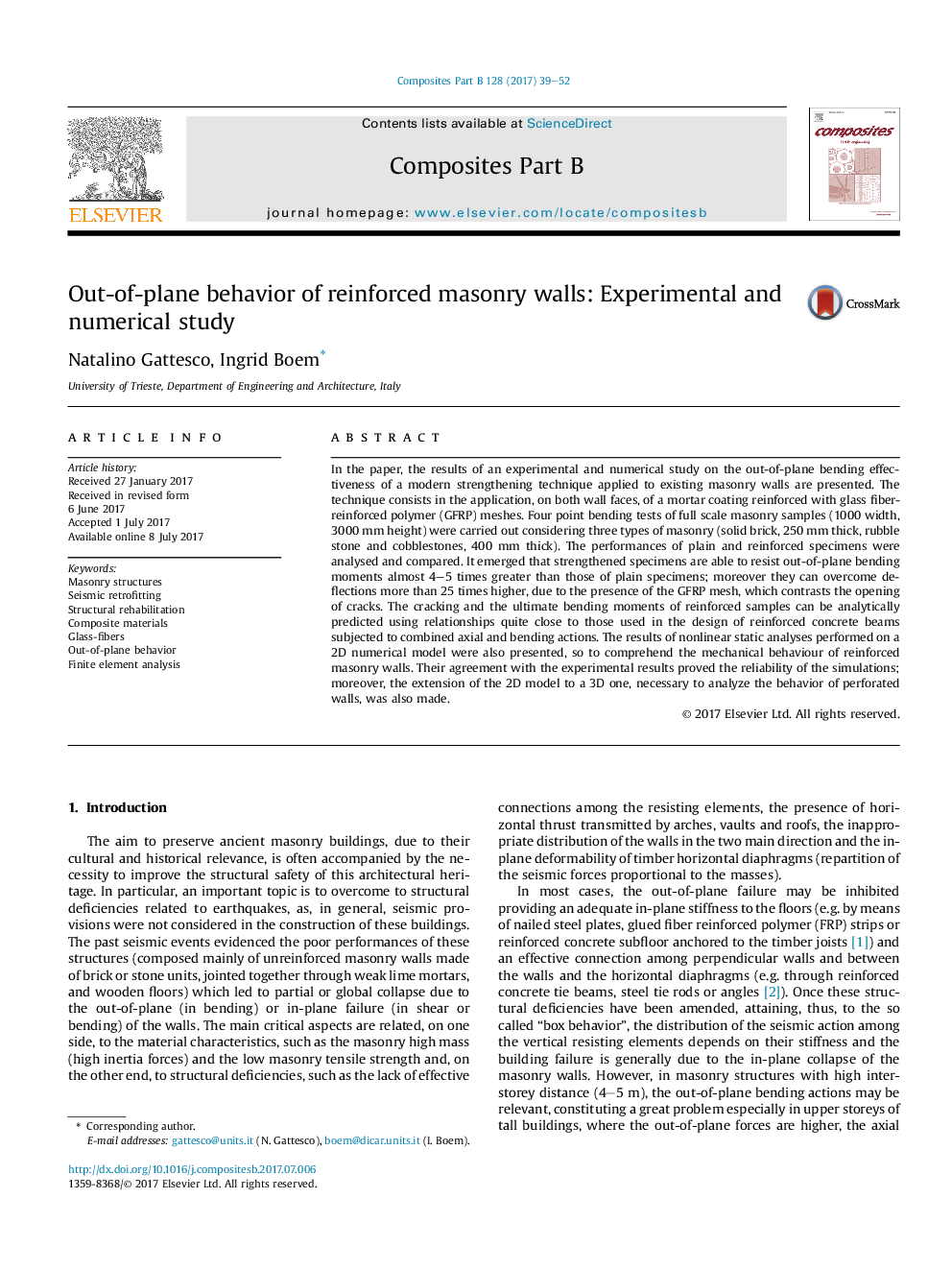| Article ID | Journal | Published Year | Pages | File Type |
|---|---|---|---|---|
| 5021131 | Composites Part B: Engineering | 2017 | 14 Pages |
Abstract
In the paper, the results of an experimental and numerical study on the out-of-plane bending effectiveness of a modern strengthening technique applied to existing masonry walls are presented. The technique consists in the application, on both wall faces, of a mortar coating reinforced with glass fiber-reinforced polymer (GFRP) meshes. Four point bending tests of full scale masonry samples (1000 width, 3000Â mm height) were carried out considering three types of masonry (solid brick, 250Â mm thick, rubble stone and cobblestones, 400Â mm thick). The performances of plain and reinforced specimens were analysed and compared. It emerged that strengthened specimens are able to resist out-of-plane bending moments almost 4-5 times greater than those of plain specimens; moreover they can overcome deflections more than 25 times higher, due to the presence of the GFRP mesh, which contrasts the opening of cracks. The cracking and the ultimate bending moments of reinforced samples can be analytically predicted using relationships quite close to those used in the design of reinforced concrete beams subjected to combined axial and bending actions. The results of nonlinear static analyses performed on a 2D numerical model were also presented, so to comprehend the mechanical behaviour of reinforced masonry walls. Their agreement with the experimental results proved the reliability of the simulations; moreover, the extension of the 2D model to a 3D one, necessary to analyze the behavior of perforated walls, was also made.
Keywords
Related Topics
Physical Sciences and Engineering
Engineering
Engineering (General)
Authors
Natalino Gattesco, Ingrid Boem,
